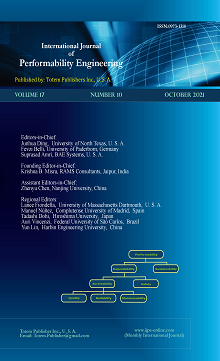-
Probit Regressive Tversky Indexed Rocchio Convolutive Deep Neural Learning for Legal Document Data Analytics
- Divya Mohan and Latha Ravindran Nair
-
2021, 17(10):
837-847.
doi:10.23940/ijpe.21.10.p1.837847
-
 Abstract
Abstract
 PDF (553KB)
PDF (553KB)

-
References |
Related Articles
Legal documents data analytics is a very significant process in the field of computational law. Semantically analyzing the documents is more challenging since they are often more complicated than open domain documents. Efficient document analysis is crucial to current legal applications, such as case-based reasoning, legal citations, and so on. Due to the extensive growth of documents of data, several statistical machine learning methods have been developed for Legal documents data analytics. However, documents are large and highly complex, so traditional machine learning-based classification models are inefficient for accurate data analytics with minimum time. In order to improve accurate legal documents data analytics with minimum time, an efficient technique called Probit Regressive Tversky Indexed Rocchio Convolutive Deep Neural Learning (PRTIRCDNL) is introduced. The PRTIRCDNL technique uses the Convolutive Deep neural learning concept to learn the given input with the help of many layers and provides accurate classification results. Convolutive Deep Neural Learning uses two different processing steps such as keyword extraction and classification in different layers such as input, two hidden layers, and an output layer. Initially, large numbers of legal documents are collected from the dataset. Then, the collected legal documents are sent to the input layer of the convolutive deep neural learning. The input legal documents are transferred into the first hidden layer where the keyword extraction process is carried out by applying the Target projective probit Regression. Then, the regression function extracts the keywords based on frequent occurrence scores. Next, the extracted keywords are transferred into the second hidden layer where the document classification is performed using the Tversky similarity indexive Rocchio classifier. Likewise, all the legal documents are classified into different classes. The experimental evaluation is carried out using different performance metrics such as accuracy, precision, recall, F-measure, and computational time with respect to the number of legal documents collected from the dataset. The observed results confirmed that the presented PRTIRCDNL technique provides better performance in terms of achieving higher accuracy, precision, recall, and F-measure with minimum computation time.

